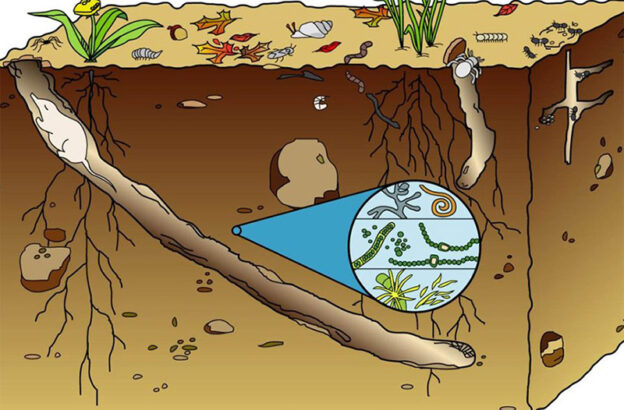Soil – Part 3
Humus:
Dark part of soil resulting from decayed matter. It remains after the decomposition of plant tissues and it gets incorporated into soil crumbs.
- It makes the soil sticky and so sticks soil particles together hence improving soil structure.
- It increases water retention in sand soil,
- improves aeration especially in clay soil,
- adds nutrients to soil, provides shelter to microbes,
- and prevents soil from becoming too cold since it absorbs heat due to the dark colour
Inorganic particles:
These are particles formed when rocks are weathered and broken down. These are the frame work of the soil. They include clay, silt, sand and gravel. Clay particles are the smallest with a diameter of approximately 0.02 mm while sand particles have a diameter of about 3 mm.
- These particles give support and anchorage to plants.
- They also contain mineral salts which can be used by the living organisms.
- They have spaces between them which can be occupied by air and water.
Mineral salts:
Dissolved minerals exist in solution with soil water. These include nitrates, phosphates, chlorides, nitrites, sodium ions, ammonium ions, potassium ions among others. They arise from rocks and humus from plant and animal material.
- They are used to make plant materials for example chlorophyll for example nitrates.
- When absorbed by plants, the minerals encourage movement of water from the soil into plants from soil.
Questions
1. How is humus formed?
Humus makes soil dark. Give the importance of making soil darker
Describe how addition of humus improves the properties of
- sandy soil
- clay soil
2. Mention the four inorganic components, in order of decreasing size. Start with the largest particles
(b) State the importance of these particles
3. Mention any three mineral ions found in soil.
(b) What is the importance of nitrogen in the plant body?

